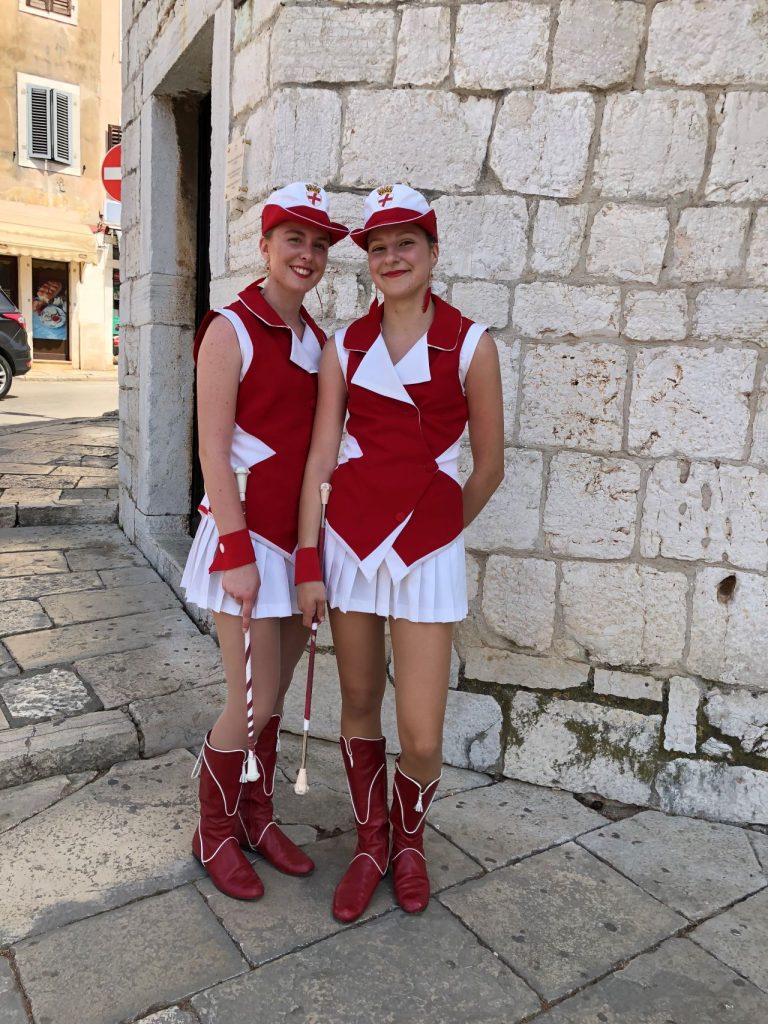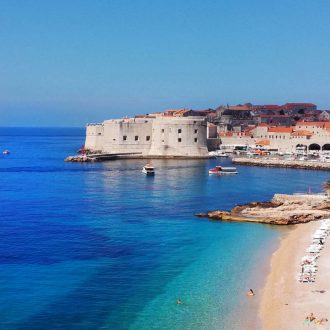
It is a kaleidoscope of colors that greets me at Rovinj Old Town. The turquoise waters of the Adriatic Ocean are set abuzz with the fluttering of sails, painted in vivid shades of yellows and reds as they strike a contrast against the blue sea. The pulsating music sets the tone as the flotilla of yachts dance in the ocean, tossed by the winds. Cheer girls dressed in bright red dance to the tunes as locals and tourists throng the shores. The charming city of Rovinj, located on the western coast of Istria in Croatia is bustling with tourists as there are several places to see and things to do in Rovinj. As I stand on the beach, lost in the music and the colors, I realize that it’s their annual regatta. There are 40 boats of different kinds – from catamarans to rafts and the traditional batanas of Rovinj Istria.

The batanas catch my attention, as these charming flat-bottom wooden fishing barges were once simple rowing boats with sails and were not powered by motors. The batanas were believed to have been built with materials that were available to the fishermen in their homes and even the sizes varied. Today, the batana is not just a simple dinghy but a symbol of the cultural heritage of Croatia. Even today in summer, you can see a batana being built by the local fishermen and then launched to the sea, with bitinada songs, and ditties sung by local fishermen. There is the Batana House Eco Museum and even a Fishing Light Parade with the batana and bitinada music and exploring it is one of the things to do in Rovinj.
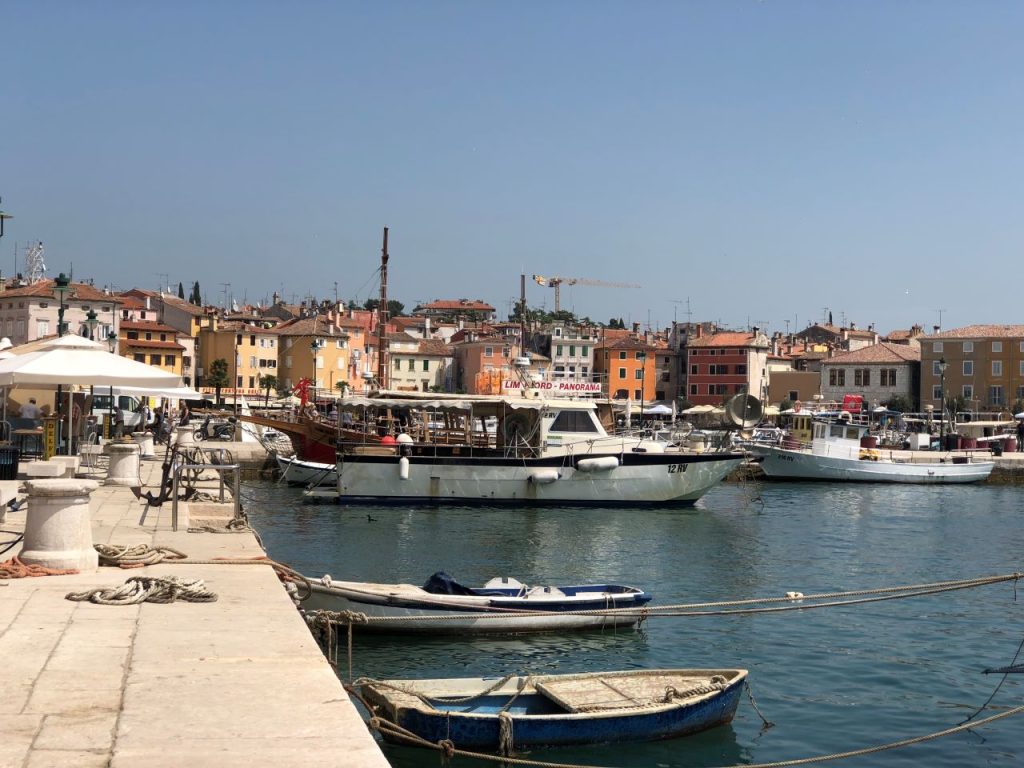
Rovinj is the crown jewel among the coastal towns of peninsular Istria with a population of just 14,000 people. It was believed to be founded between the 3rd and 5th centuries AD but historians say that it was inhabited during prehistoric times as well. The Istrian tribes lived here and traded with ancient Greeks. The town was then called Castrum Rubini and it was ruled by the Romans and the Venetians and was also part of the Byzantine Empire. It became an important port for trade during medieval times.
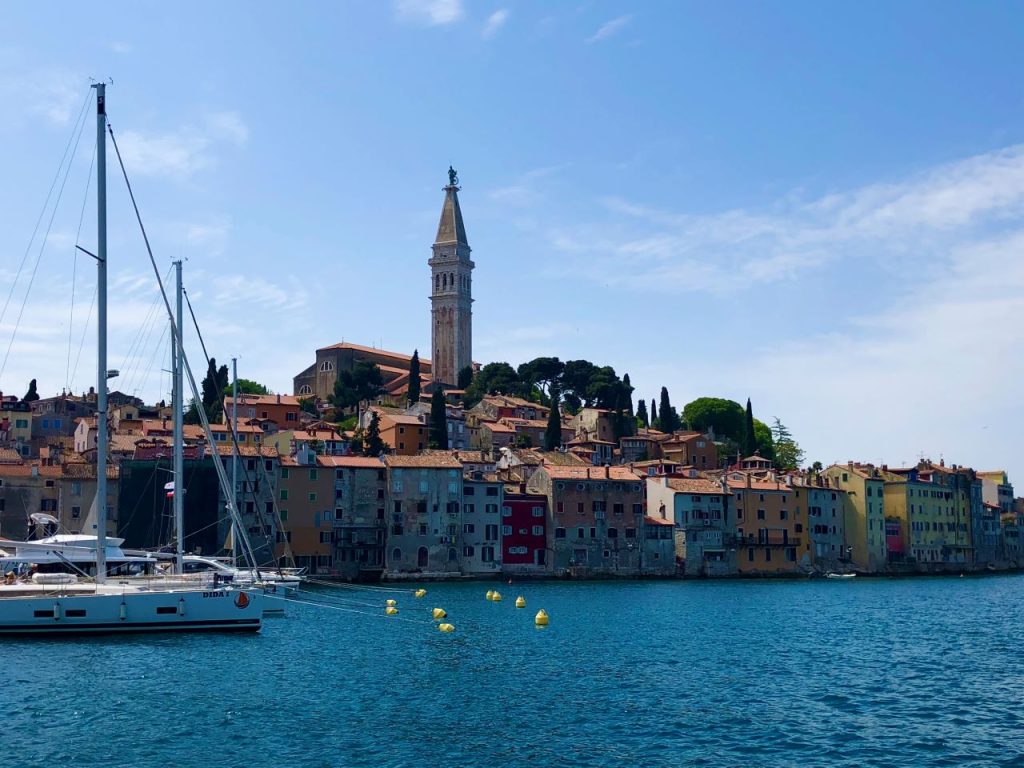
Even today Rovinj Old Town retains its Italian connection and people speak both Italian and Croatian. Some locals also speak Istriot, considered to be one of the ancient Romance languages, derived from colloquial or Vulgar Latin and it is spoken only in this region. While most of its historic flavour is captured in the quaint Old Town, Rovinj is an ode to loveliness with its archipelago of more than 20 islands, several beaches, and a bustling fishing port.

I tear myself away from the carnival atmosphere and board a ferry that takes me on a cruise around the archipelago. The winds have just set in and the sky is cloudless. Small islets appear on the horizon as emeralds sparkling in a sea of turquoise. There are many islands in Rovinj Istria and they are referred to as “landscapes of outstanding value.” In fifteen minutes, we stop at Red Island, which actually connects two islands – St Andrew Island and Maskin Island and lose ourselves in the pristine scenery. St Andrew Island is one of the biggest and it is believed to have been inhabited from prehistoric times. A monastery was built in the medieval era and a factory was later constructed by the French as well. I sip a glass of wine in one of the seaside restaurants and forget myself in the languid atmosphere.
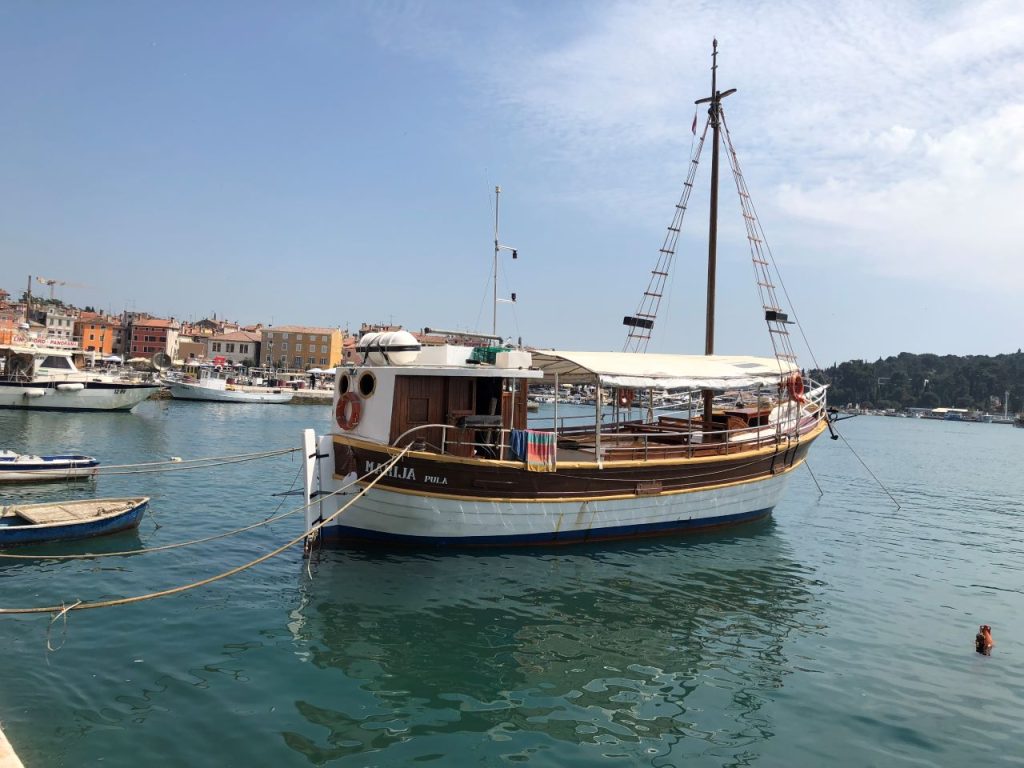
Besides Red Island, the more popular and touristy island is St Katharina Island. I have not seen a more enchanting and verdant island anywhere, dotted with tall conifers and pines, olive trees, and woodlands. There are vineyards and gardens as island hopping is one of the best things to do in Rovinj. The beaches are brimming with swimmers and I find a quiet corner. Towering rocks – titled Golden, Silver, and Bronze seem to emerge from the ocean and stand at a height of 15 metres. These rocky bays topped with vegetation become popular spots for adventurous divers who jump into the oceans. I potter around looking for picturesque views and hidden bays where quiet beaches with pristine sands greet me. Colourful sails paint the landscape as I gaze upon the Rovinj Old Town and the harbour. There is just one hotel here and I refresh myself with another glass of wine, but it’s the beauty that intoxicates me more.
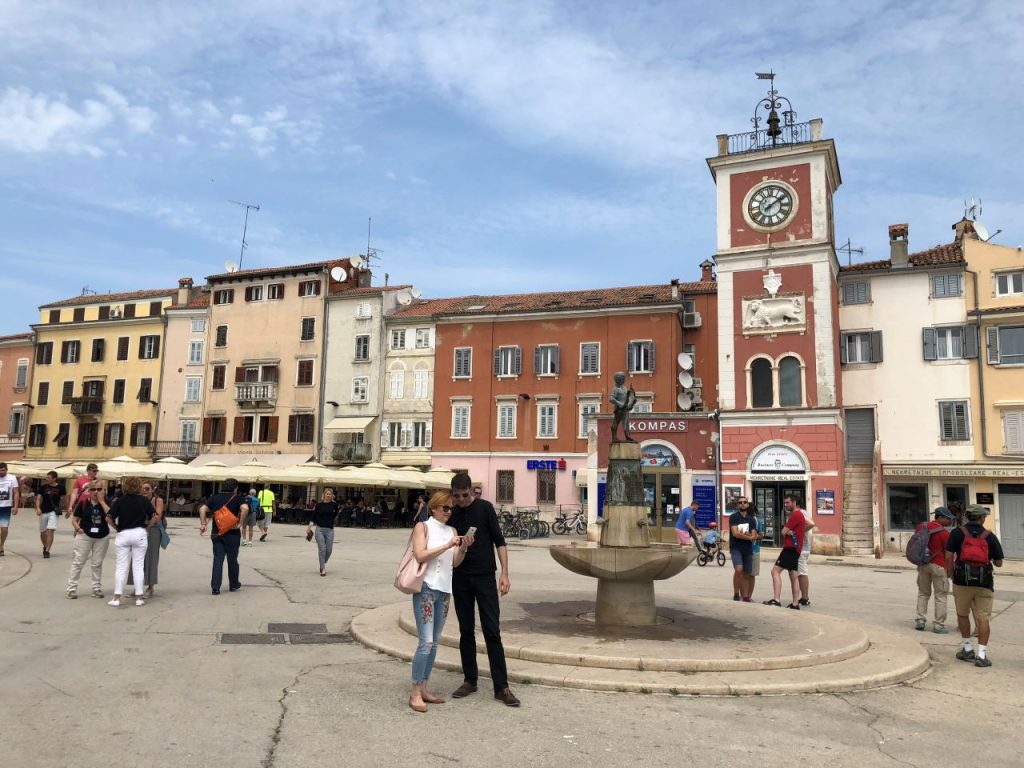
Back on the mainland, I head to the quaint Rovinj Old Town, a maze of narrow cobblestone alleys and hidden stairways that throbs with life. It is magical out here as I open secret doors that lead to colourful squares surrounded by pretty houses that have a distinct character. Built in the 18th century, I become a time traveller as every wall here tells a story.
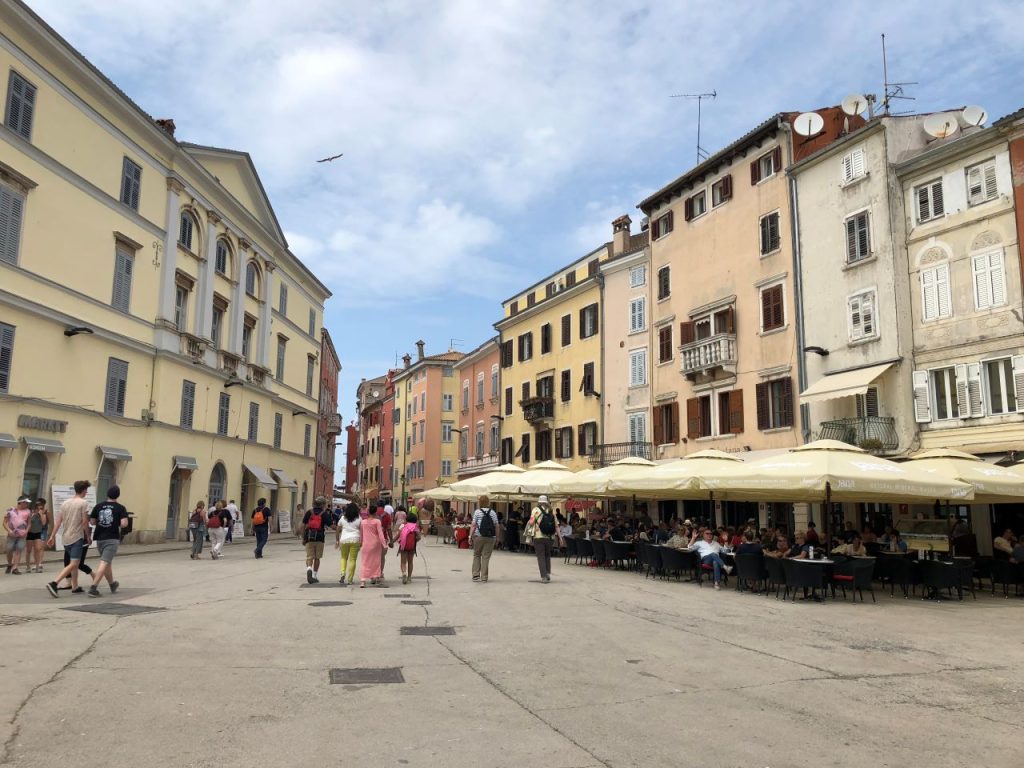
I start from the main square – Marsala Tita Square, the very nucleus of Rovinj Istria where old buildings dipped in shades of pastels stand out against the blues of the ocean. A charming fountain stands at the centre where a little boy stands holding a fish. Surrounding him are carvings of fish with water gushing out of their mouths.
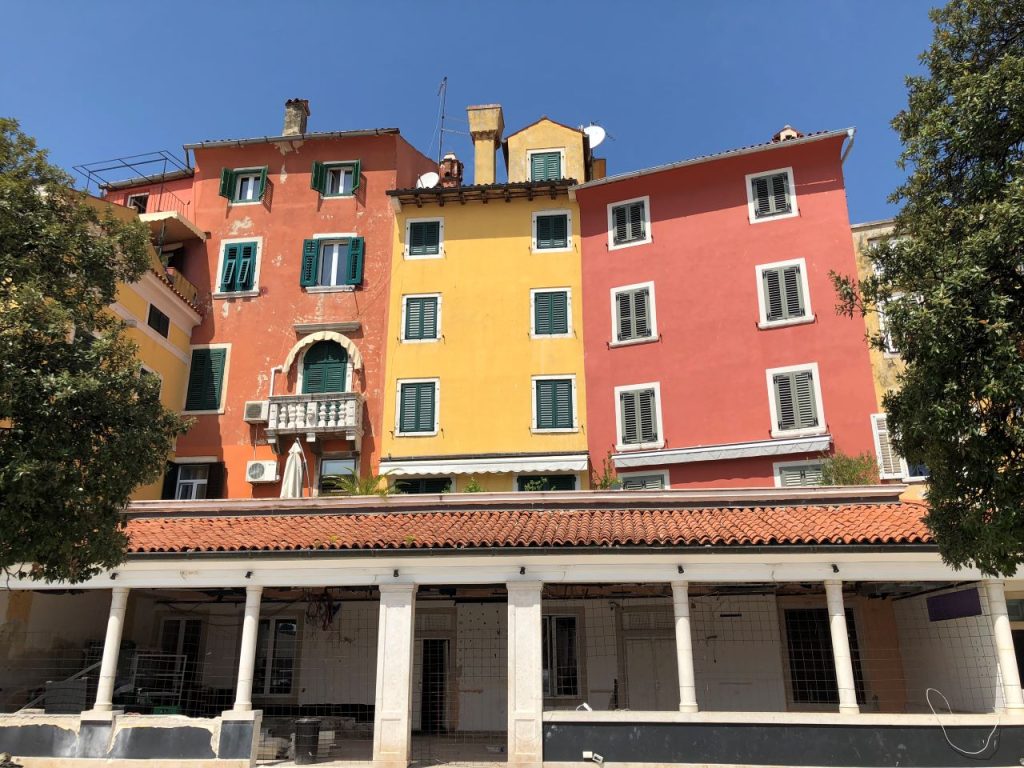
There is an ancient gateway, called the Balbi’s Arch which marks the entrance to the town. Built by the family of Balbi, you can see their faces carved on the arch, while a winged lion looks from above. I walk aimlessly and head to the market and wander around the Rovinj Old Town.

I am lost in the annals of time as I find myself in a unique labyrinth. Houses are huddled together where old women sit and have a quick chat while bicycles whizz past me. I enter little lanes that take me up a steep path and climb a flight of stone steps and walk into an open-air gallery. Grisia is not just a street but also the venue of an annual art festival in summer. It is also one of the main thoroughfares of Rovinj where a farrago of local shops selling everything from delicious gelato to local souvenirs to paintings to crafts greet you. Cafes and restaurants are bustling with people as ice cream and gelato shops run full.

Local artists even beckon you to do a portrait as buskers entertain you. Exploring this little hillock is one of the favorite things to do in Rovinj. I slowly wander away, with a cone of ice cream, deliberately getting lost until I eventually find my way to the church of Euphemia, that stands atop the Old Town. The edifice of white, built in the Venetian style of architecture is dedicated to the patron saint of the city. Built in the 10th century, it had two wooden statues of St George and St Euphemia. However, the present church was built 700 years later and rebuilt again in the next century
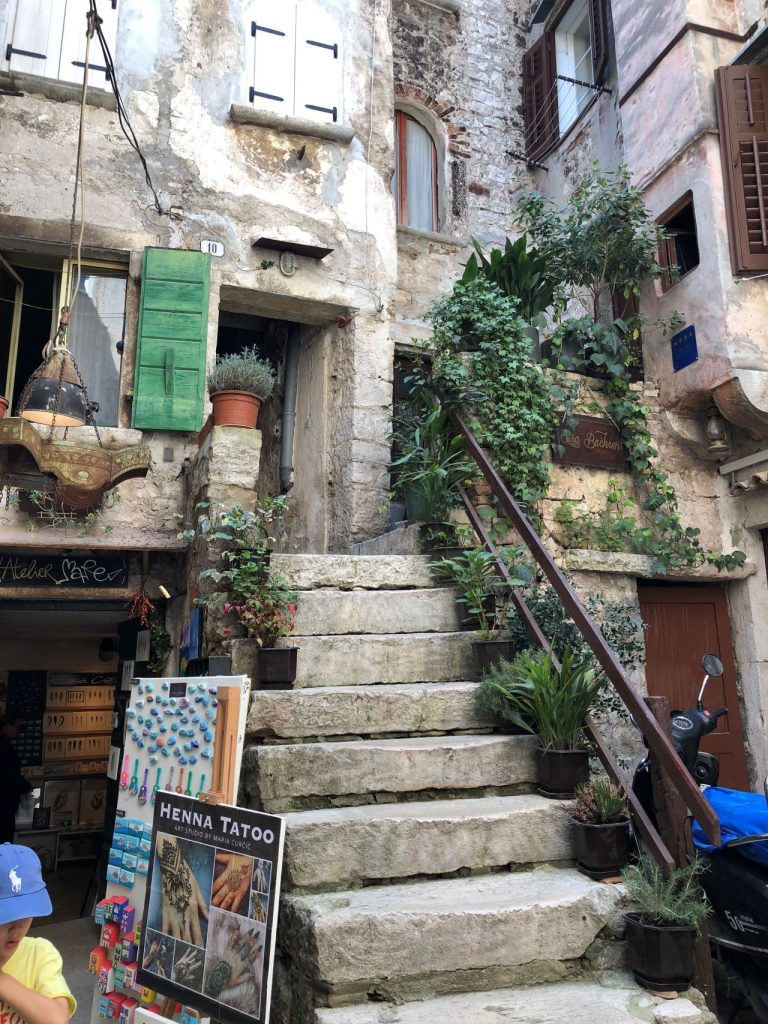
As I stand there and gaze upon the hazy view of Rovinj from the top, I hear the story of St Euphemia who was martyred as a young girl for embracing Christianity by the Roman Emperor, Diocletian. It is said that she was tortured and thrown to the lions, who killed her but did not destroy her body. The body was then preserved by the Christians and was eventually transferred along with the sarcophagus to Constantinople where a church was built by Emperor Constantine.
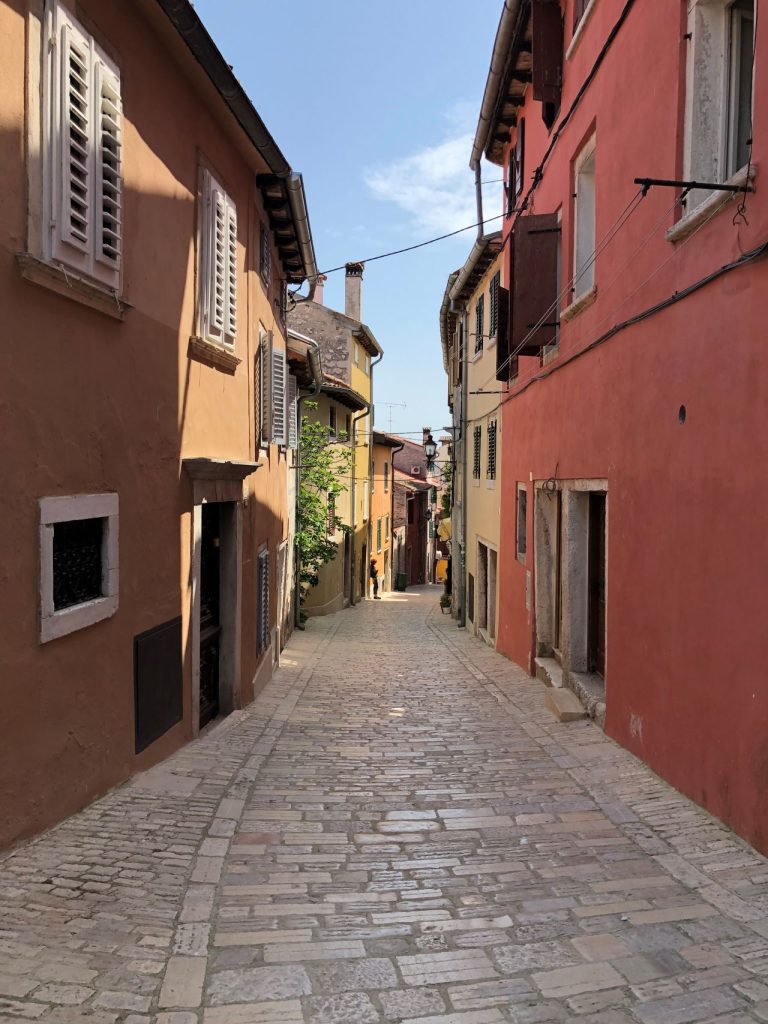
However, when the relics were destroyed in a war, it is believed that a marble sarcophagus was found on the shores of Rovinj after a massive storm. The locals tried dragging it but to no avail. Eventually, it was hauled up the hill by a cowherd. Overwhelmed by the miracle, the people of Rovinj decided to make St Euphemia their patron saint and built a church for her.
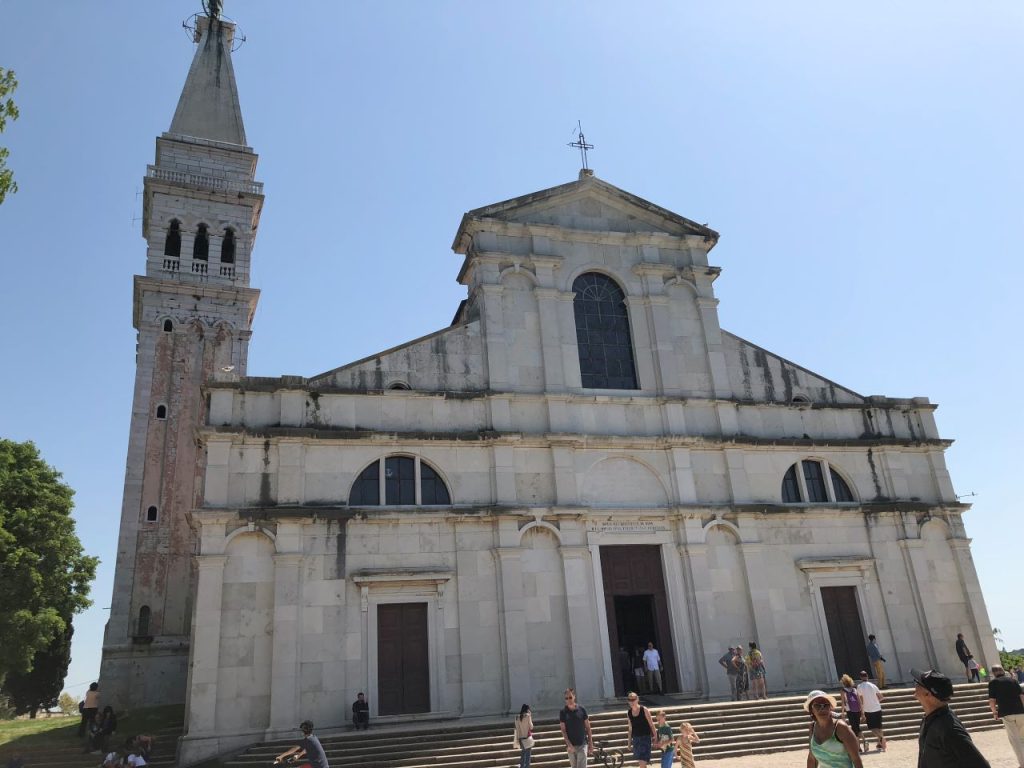
For a moment I stand there in silence, looking down at the Rovinj Old town. Dazzling in shades of pink, the dainty houses cling to the tall spire which stands out amidst the ruby-tinged town. The entire town looks like a jewel, basking in shades of pink amidst the turquoise waters of the Adriatic. And everything around me seems so pale in comparison. Time literally pauses here as I stand there for what feels like an eternity until the next destination beckons me.
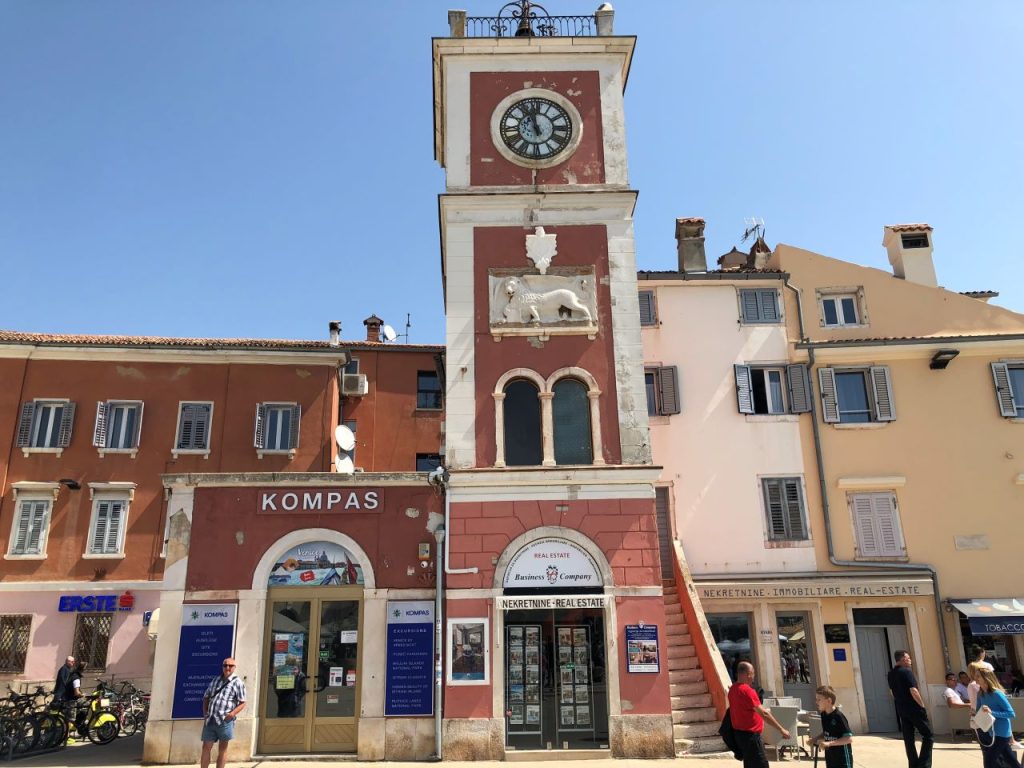
Have you been to Rovinj Istria? What are some of the things to do in Rovinj that you would recommend besides exploring the charming Rovinj Old Town ?
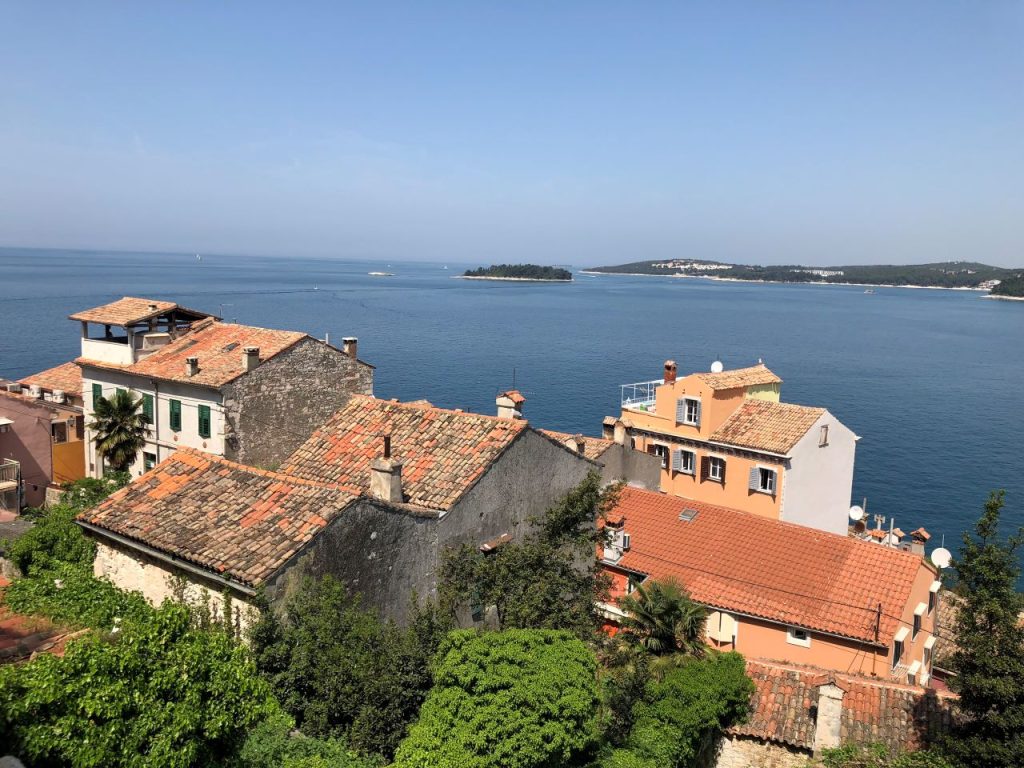
Rovinj to Pula
Rovinj and Pula are both located on the Istrian peninsula in Croatia and the best way to go from Rovinj to Pula is by car , taxi or bus and it takes about 30 minutes. The closest airport to Rovinj is in Pula and most travellers either stay in Pula or Rovinj. We were on a road trip through Istria and we were self-driving from Italy and we stayed in Pula and explored the Istrian coast.